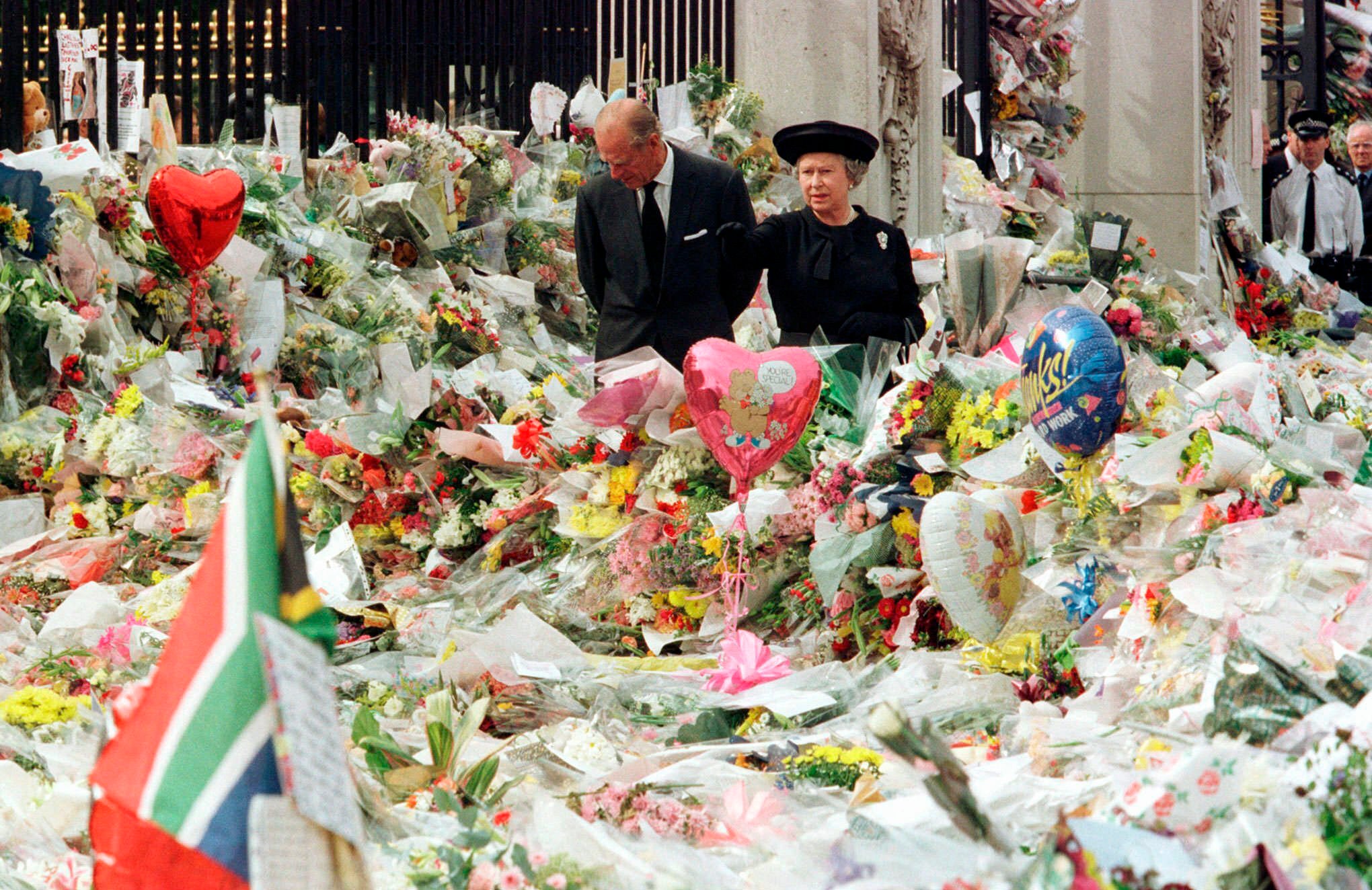After 25 years, is Diana’s influence finally fading?
The loss of Diana was a seismic moment in modern history. Sean O’Grady asks what has become of the personal legacy of a woman whose life – and death – inspired such an outpouring of public emotion


Your support helps us to tell the story
From reproductive rights to climate change to Big Tech, The Independent is on the ground when the story is developing. Whether it's investigating the financials of Elon Musk's pro-Trump PAC or producing our latest documentary, 'The A Word', which shines a light on the American women fighting for reproductive rights, we know how important it is to parse out the facts from the messaging.
At such a critical moment in US history, we need reporters on the ground. Your donation allows us to keep sending journalists to speak to both sides of the story.
The Independent is trusted by Americans across the entire political spectrum. And unlike many other quality news outlets, we choose not to lock Americans out of our reporting and analysis with paywalls. We believe quality journalism should be available to everyone, paid for by those who can afford it.
Your support makes all the difference.Like most people over about the age of 40, I can remember where I was when I heard that Diana, Princess of Wales, had died. A mental image of what you were doing is the standard sort of test for a Category A death (though the only other ones I can remember are Elvis Presley and John Lennon).
A friend who, like me, worked at the BBC at the time rang me at about five in the morning and told me to turn the television on. In those days, I used to drive to work past Kensington Gardens, and it was impressive yet mystifying to see, day by day, the growing mountain of flowers, soft toys, handwritten messages, candles and tears outside the palace in which she had lived. The scent was quite overpowering.
Try as I might, I couldn’t bring myself to mourn for a stranger, but it seemed a minority view. Everyone else seemed to be weeping inconsolably, as if their mum had died.
A similar monument to Di was being constructed, bouquet by bouquet, outside Buckingham Palace, and the refusal of the Queen to return to the capital was provoking an almost tangibly mutinous mood. For the first time, the British were expressing their grief for a woman they had never met, nor were ever likely to know, with open and public wailing. It was an outpouring of emotion of a kind that Britain had never really seen before.
It was, therefore, something of a turning point; an Americanisation, perhaps, of the British approach to death. In the past, with the late King George or Winston Churchill, say, the mourning was dignified, silent and stiff upper lip. Thousands shuffled silently past a catafalque, or bowed their heads and dabbed a solitary tear. This was a very different affair: it was out of control, hysterical, noisy, visceral – and vengeful with it.
Vengeful, that is, towards the man and the woman many blamed, rationally or not, for the miserable life and death of Diana. Especially the woman – the one Diana was referring to in 1995 when she divulged to Martin Bashir, and about 200 million viewers across the world, that “there were three of us in that marriage”.
The tragedy of Diana was thus seen to be authored by Charles and, in particular, the then Camilla Parker Bowles. Camilla was, to use a bit of tabloidese, the most hated woman in Britain. Reviled, indeed, and unable to show her face – a face routinely insulted by press and public as belonging to a hag, or an “old bag”; as hatchetty, horsey and frumpy.
Over the years, the reputation of the woman Diana referred to as “the rottweiler” had been shredded. She had paid a considerable price for being the prince’s mistress, to use another misogynistic term of the time. Diana, by contrast, was the self-crowned Queen of Hearts even before she died and was canonised by the British public. She was forever young-ish, the eternal candle in the wind. Age would not weary her, nor Rothmans and a large intake of gin.
For the best part of a decade before the accident in Paris, the British public had learnt – leak by leak, gossip column by gossip column, book by book, bombshell interview by bombshell interview – the appalling truth about the “fairytale” marriage in which the majority of them had invested so much... and Camilla’s destructive role in it. It was, in other words, quite unthinkable that Camilla Parker Bowles, who had, like Charles, divorced only a couple of years earlier, would be able to marry the heir to the throne, let alone become Queen.
The very suggestion was enough to throw Diana loyalists into the throes of indignant fury. There’d have been a riot. The rest of the country, including by all accounts Elizabeth II, thought such an idea unwise at best. Charles didn’t push his luck for many years. But he knew what he wanted.

The death of Diana was a global shock, and she was at her most powerful in the days immediately afterwards. It was, as many noted at the time and in the following years, the most dangerous moment for the House of Windsor since the abdication crisis of 1936. Nothing that took place before or after it – not even the Oprah interview with the Duke and Duchess of Sussex – has had the same effect of tottering the institution itself, though it had been listing dangerously ever since the truth about the Waleses’ marriage had emerged a few years earlier.
The saga of separation and divorce, and the sensational stories of adultery, cruelty, self-harm and betrayal, provided the narrative – one in which people tended to take sides, and they tended not to display much sympathy for Camilla, the pantomime villain.
But look at the picture now. Last year, the Queen announced that she wished Camilla to be Queen Consort to her son, and there was barely a flutter of indignation at the announcement – though it was interesting to see how rarely the rather incendiary phrase “Queen Camilla” was used, as opposed to the less offensive (to the few who cared that much) “Queen Consort”.
It was the final blessing in a process that had begun not long after the death of Diana, during which Charles and a string of flunkies and PR experts pursued the rehabilitation of a man who had been caught on the phone comparing himself to a tampon being inserted into Ms Parker Bowles. The saintly image of Diana was besmirched by tales of her own affairs, and she was portrayed as unstable and paranoid.
“Operation PB” sought gradually to insert Camilla into public acceptance – and thus that of the Queen – and to secure her marriage to Charles along with a growing public role for her. So it has evolved (the Order of the Garter and an osteoporosis campaign thrown in). Those of us who still think there is something unjust about “Queen Camilla” – something still annoyingly stolen from Diana – find ourselves in a quiet, grey-haired corner of quiet dissent.
To keep up to speed with all the latest opinions and comment, sign up to our free weekly Voices Dispatches newsletter by clicking here
Today, in our soapy perspective of royalty, the proxy wars between supporters of Charles and Diana have dissipated. They have morphed, in a manner of speaking, into the wars between the Cambridges and the Sussexes, with Prince William taking the side of his father, and Harry that of his mum. The British seem to demand conflict in their monarchy as much as they expect dignity and devotion to duty.
Diana once proved that, albeit not through any choice of her own. But there are more vital, more immediate and tragic conflicts to dwell on now; and there is a new princess of hearts, Meghan, to act as the hunted – though she, unlike Diana, seems to have given her tormentors the slip.
The “Diana Party”, so vigorous in the 1990s, seems to have wound itself up; a few faithful adherents to the cult of Diana still remember the anniversaries and turn up to the occasional memorial events, not least because they now also mark the rare instances when her sons are seen in public together.
Many have no first-hand memory of Diana, and, while she remains a Marilyn Monroe-esque icon, and her face can still sell newspapers and magazines, she is no longer a force to be reckoned with. Diana, Princess of Wales, has, in that respect, faded. The candle’s finally gone out.


Join our commenting forum
Join thought-provoking conversations, follow other Independent readers and see their replies
Comments